Dubai is always coming up with something to attract tourists. Now the largest medical center in the Persian Gulf is to be built there, planned by Studio Kalbod.
Dubai, a place of extremes and contrasts. While influencers, business people and tourists enjoy luxury travel and exclusive experiences here, migrant workers, mostly men, do hard work and often face major challenges when it comes to their rights. In terms of human rights and equality, there is still much room for improvement in the United Arab Emirates.
Nevertheless, or perhaps precisely because of this, Dubai has come up with a number of ideas in recent years to establish itself as a tourist magnet. For example, the Burj Khalifa, the tallest building in the world, still serves as a symbol of progress and innovation. Now another project has been unveiled: Ring Island Dubai. A multifunctional complex along the seashore focused on medical tourism. It was designed by the renowned Studio Kalbod.
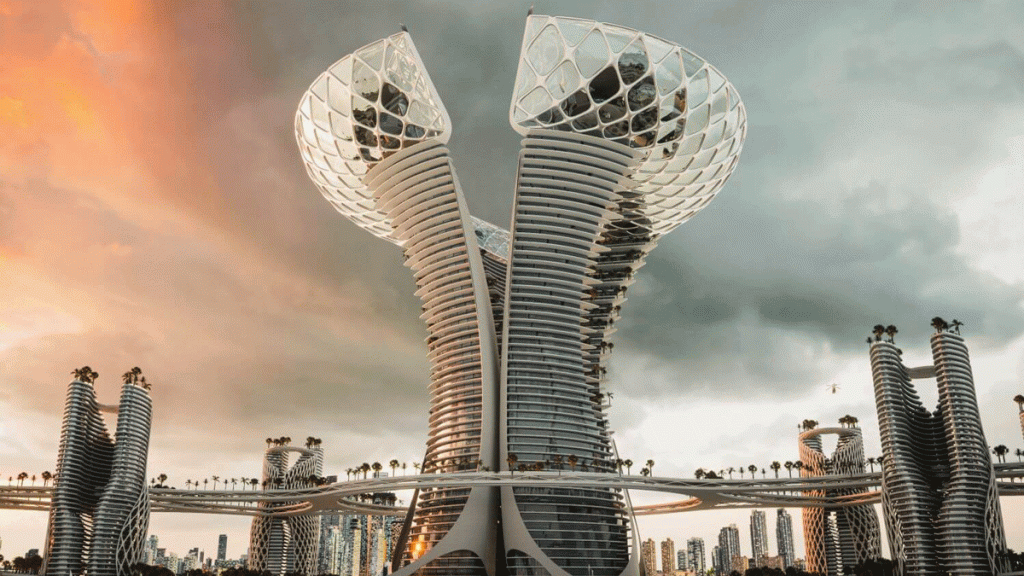
Dubai health
Dubai has long been known for its excellent healthcare system. In recent years, it has become a leading destination for medical travel, with modern hospitals and world-class medical facilities. Against this backdrop, the Ring Island Dubai complex aspires to become the largest tourist medical center in the Persian Gulf.
Medical tourism is not a new thing. People now often fly to other countries for cosmetic surgery or other medical procedures. Revenues from this sector in the United Arab Emirates already amounted to 12.1 billion UAE dirhams (the equivalent of around 3 billion euros) in 2018. By 2023, they are expected to reach 19.5 billion dirhams (just under 5 billion euros).
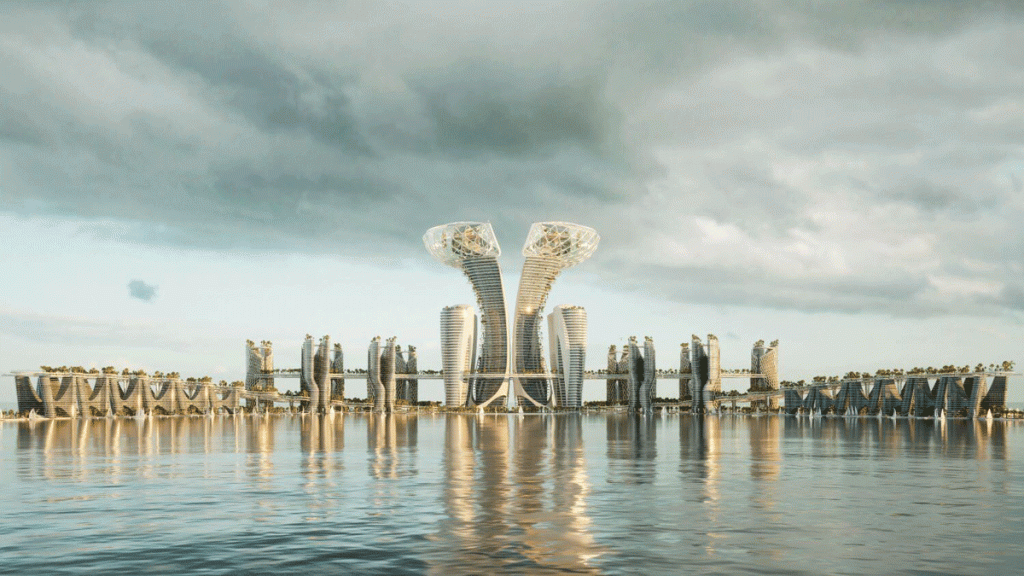
All good things come in threes
But what exactly is Ring Island Dubai? The entire project is primarily designed for pedestrians. One is supposed to move around the island – besides walking – exclusively by various means of transportation such as monorails or electric cars. The arrival takes place in the tunnel: The entrance is located underwater, where there are also green oases to linger.
The site is designed in the shape of a crescent, incorporating Dubai’s regional architecture, the geometric elements of the Burj al Arab, one of the world’s most expensive hotels, and Islamic symbols into the design. In all, there are three zones. One for research, one for medical services and one for hotels and accommodation. The design calls for connecting the buildings with bridges where people can walk while enjoying views of Dubai and the Persian Gulf. Various plants will be planted on the many terraces and roofs, not only to improve air quality but also to provide shade for visitors:inside.
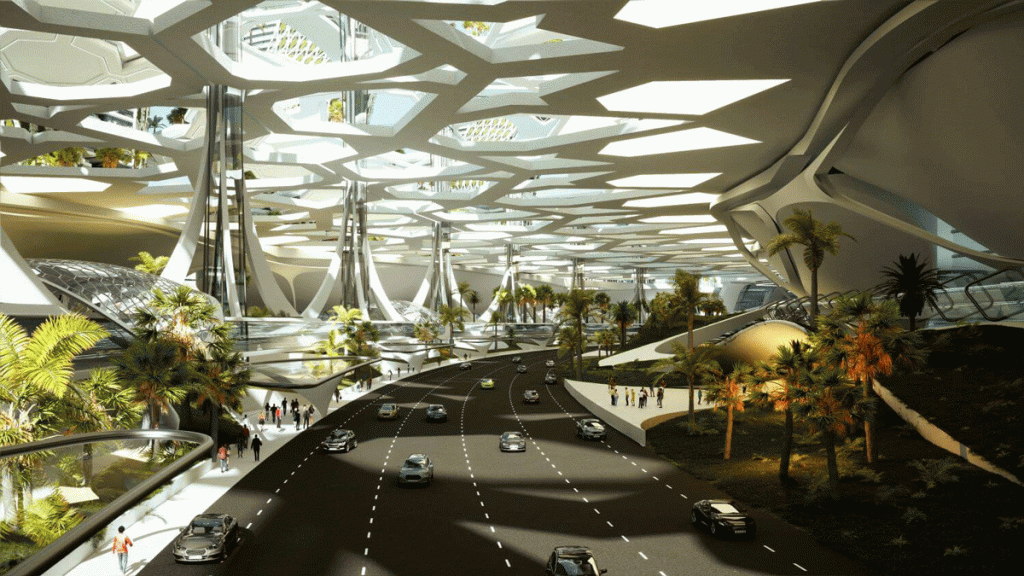
One tower, two parts
The central tower of the island, with an area of one million square meters, consists of two parts. The base of the building, with an area of 670,000 square meters, is dedicated to educational and research activities. The crescent on top, with an area of 330,000 square meters, includes an exhibition hall, a research and development department, a science and technology park, a library and an exhibition of digital achievements.
In addition to the central skyscraper, the design calls for fourteen towers to house medical services. At the two ends of the Crescent Island are the hotels. All buildings are symmetrically arranged on both sides of the central skyscraper.
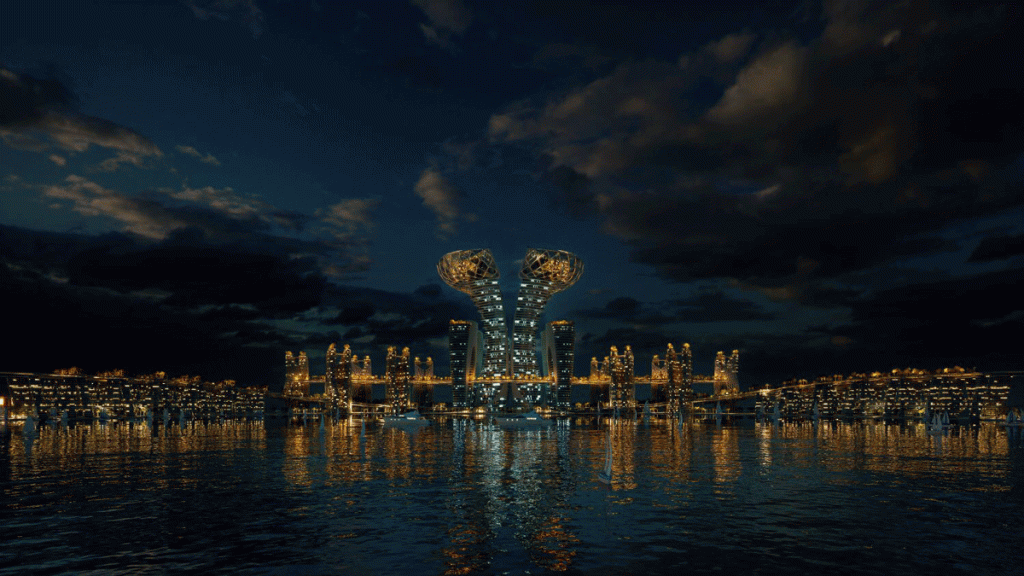
According to the architectural firm, the project is not only intended to meet the needs of visitors, but also to contribute to improving the quality of life in Dubai. It remains to be seen how this concept will fit into the city’s skyline and what impact it will have on medical tourism in the region. One thing is certain: Dubai surprises again and again with projects and announcements that astonish and also worry the world.
Text: Resi Reiner
Fotos: Kalbod


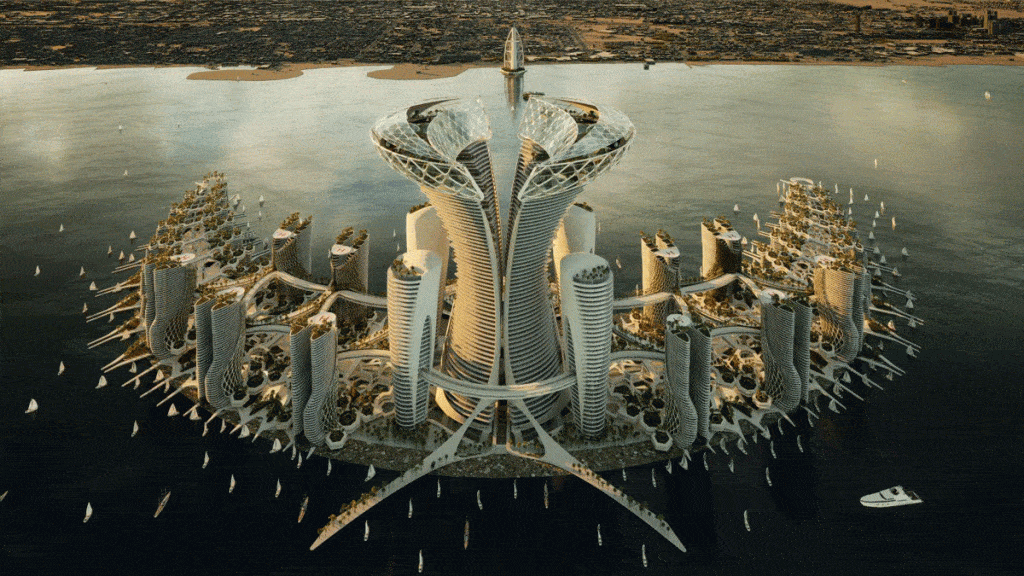
iThere are no comments
Add yours